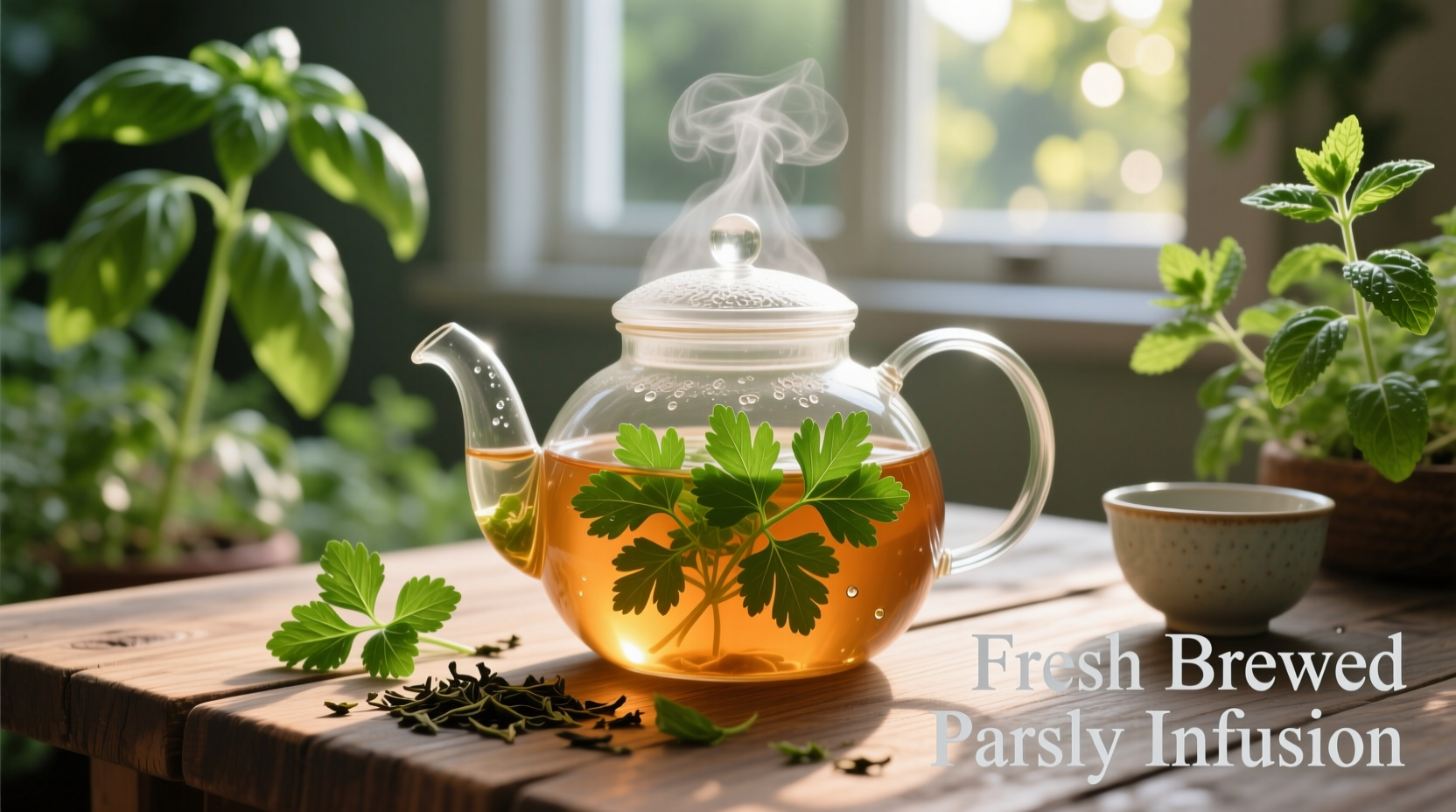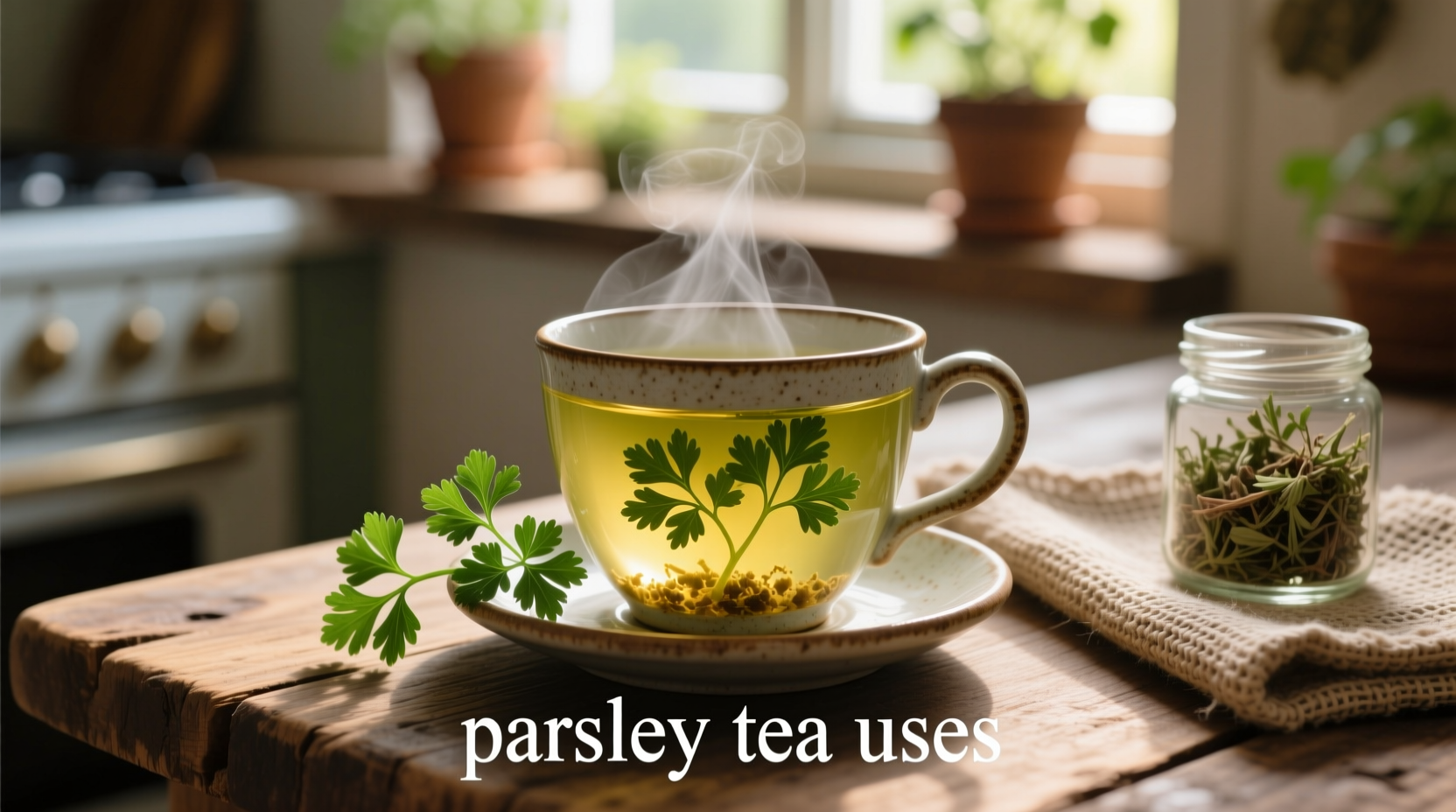For centuries, herbal traditions across Mediterranean and European cultures have utilized parsley tea for wellness support. Modern research continues to validate many traditional applications while clarifying appropriate usage boundaries. This guide separates evidence-based benefits from anecdotal claims, providing practical preparation methods and essential safety information.
Understanding Parsley Tea and Its Historical Context
Parsley (Petroselinum crispum), a member of the Apiaceae family, has been valued since ancient Greek and Roman times not just as a culinary herb but as a medicinal plant. Historical records from 16th century European herbals document its use for supporting kidney function and reducing water retention. Unlike many trendy herbal remedies, parsley tea's applications have withstood scientific scrutiny for specific health purposes.
Evidence-Supported Uses of Parsley Tea
Current research validates several traditional uses of parsley tea while establishing appropriate context for its application:
Natural Diuretic for Kidney Health
Multiple studies confirm parsley's diuretic properties. Research published in the Journal of Ethnopharmacology demonstrated that parsley extract significantly increased urine output without depleting potassium levels, unlike many pharmaceutical diuretics. This makes parsley tea a potentially valuable natural option for managing mild fluid retention. The National Institutes of Health notes that "parsley has been used traditionally as a diuretic, and some evidence supports this use" (NCCIH, 2023).
Digestive Support and Bloating Relief
Parsley tea contains compounds that may help relax digestive tract muscles. A 2020 review in Phytotherapy Research highlighted parsley's traditional use for digestive complaints and noted its potential anti-spasmodic effects. Many users report reduced bloating when consuming parsley tea after meals, particularly when prepared with fresh leaves.
Nutrient-Rich Beverage
Just one cup of parsley tea delivers significant nutritional value. According to USDA nutritional data, parsley contains high concentrations of vitamin K (providing over 100% of daily needs per cup), vitamin C, and antioxidants like flavonoids. While steeping reduces some nutrient levels compared to raw consumption, parsley tea remains a valuable source of these compounds.
Proper Preparation Methods for Maximum Benefit
The preparation method significantly impacts parsley tea's effectiveness:
- Fresh vs. dried: Fresh parsley generally contains higher concentrations of volatile compounds
- Water temperature: Use water just below boiling (195-205°F) to preserve delicate compounds
- Steeping time: 5-10 minutes for optimal extraction without bitterness
- Frequency: 1-2 cups daily is generally considered safe for most adults
For digestive support, consume 20 minutes before meals. For diuretic effects, morning consumption works best to avoid nighttime bathroom visits.

Safety Considerations and Important Limitations
While generally safe, parsley tea has important usage boundaries that must be understood:
- Pregnancy caution: High doses may stimulate uterine contractions; avoid during pregnancy
- Kidney conditions: Those with kidney disease should consult physicians before regular use
- Medication interactions: May interact with blood thinners due to vitamin K content
- Photosensitivity risk: Large quantities may increase sun sensitivity in some individuals
The European Medicines Agency classifies parsley as generally safe when used appropriately but notes that "excessive consumption may lead to adverse effects" (EMA, 2022). Moderation is key—more than 3 cups daily may cause adverse effects in sensitive individuals.
| Herbal Tea | Primary Benefits | Key Compounds | Special Considerations |
|---|---|---|---|
| Parsley Tea | Diuretic, kidney support, nutrient-rich | Apiol, myristicin, vitamin K | Avoid in pregnancy, kidney conditions |
| Dandelion Tea | Detoxification, liver support | Taraxacin, sesquiterpene lactones | May interact with diuretics |
| Peppermint Tea | Digestive relief, IBS symptom reduction | Menthol, menthone | Avoid with GERD, may interact with cyclosporine |
| Ginger Tea | Nausea relief, anti-inflammatory | Gingerols, shogaols | May interact with blood thinners |
Realistic Expectations: What Parsley Tea Can and Cannot Do
It's crucial to maintain realistic expectations about parsley tea's capabilities. While valuable for specific purposes, it's not a miracle cure. Research shows it works best as part of a comprehensive wellness approach rather than as a standalone treatment. The Mayo Clinic emphasizes that "herbal remedies should complement, not replace, conventional medical treatment for serious conditions" (Mayo Clinic, 2023).
For optimal results, combine parsley tea with other healthy habits: adequate hydration, balanced nutrition, and regular exercise. Track your response to determine if it provides noticeable benefits for your specific needs.
Conclusion: Integrating Parsley Tea Wisely
Parsley tea offers specific, evidence-supported benefits when used appropriately within its safety parameters. Its natural diuretic properties, digestive support potential, and nutrient density make it a valuable addition to many wellness routines. By understanding both its capabilities and limitations, you can make informed decisions about incorporating this traditional herbal remedy into your health regimen. Always consult with healthcare providers when using herbal remedies alongside medical treatments or with pre-existing health conditions.











 浙公网安备
33010002000092号
浙公网安备
33010002000092号 浙B2-20120091-4
浙B2-20120091-4